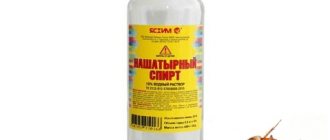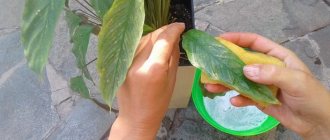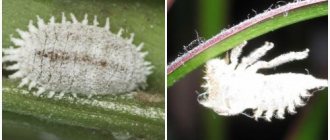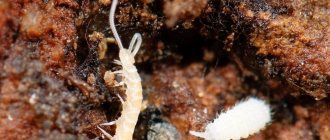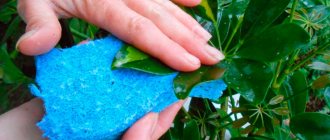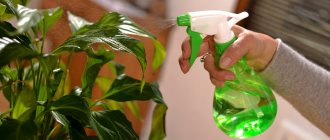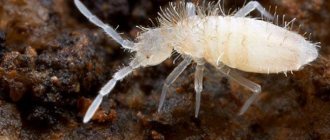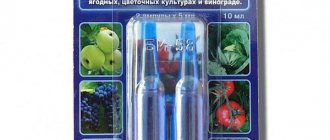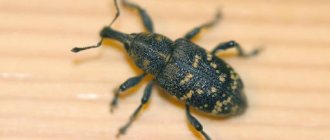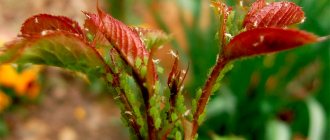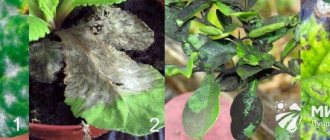Indoor flowers are planted in mineral-rich soil, which loses its properties over time. Fertilizers are washed away during the moistening process, and plants require replenishment for normal growth. There are special complexes: organic, mineral, folk remedies, with the help of which you can significantly improve their growth and flowering. One effective remedy is ammonia (ammonia). It can be purchased at any pharmacy and used for feeding and spraying home flowers.
Beneficial properties of ammonia for house plants
Ammonia has properties due to which it is successfully used in floriculture and gardening to fertilize plants. The product is used as a source of nitrogen, the main component of the organelles of indoor plants. They can only absorb it from the soil (in bound form).
Many potted flowers respond well to ammonia as a source of nitrogen: hydrangeas, geraniums, clematis, cyclamen, lilies. It is responsible for the full development of all green parts of plants.
Regardless of the method of use, ammonia has a positive effect on houseplants, this manifests itself in the form of:
- active growth;
- bright green foliage;
- abundant flowering.
In addition to enriching the soil, ammonia also disinfects it, and in some cases even helps get rid of small insects. Among them:
- mole cricket;
- aphid;
- weevil;
- spider mite;
- onion fly.
Many flower growers use ammonia in flower care because of its availability and effectiveness. It is a powerful prophylactic in the fight against certain fungal infections.
Medicines from the pharmacy for plant nutrition
Aspirin
Probably one of the most common tablets in home medicine cabinets is aspirin. But with its help you can not only lower the temperature, but also feed your indoor plants.
Acetylsalicylic acid in its composition improves the immune system of plants, increases their resistance to fungal diseases, as well as insect pests. Aspirin revives sick and weak plants , and also restores them after winter. Aspirin also improves soil quality.
To prepare a solution for irrigation, you need to crush a quarter of an aspirin tablet and dissolve it in 2 liters of water.
Castor oil
This oil is obtained from the seeds of the castor bean, a poisonous plant. It has found wide application in cosmetology and in everyday life. But this oil is also used in indoor floriculture.
Castor oil is mainly used during the flowering period. Fertilizing with this product “awakens” plants, activates their growth, and increases the number of leaves and buds.
With proper use of castor oil, even a weakened and previously poorly flowering plant can be made to bloom luxuriantly . Plants begin to bloom beautifully and suffer less.
But it is important to remember that castor oil is used only during the flowering period. Fertilizing them during the dormant period is contraindicated.
Feed the flowers with a solution of castor oil in water - add a teaspoon of oil per liter. Plants are watered with this solution.
Ammonia
This is another “pharmacy” fertilizer. Ammonia is a good fertilizer; plants easily absorb it. Because of this property, it can quickly help plants with nitrogen deficiency. Its other effects on plants: restorative, revitalizing. Typically, watering with ammonia is carried out when the plant begins to wilt. Ammonia disinfects the soil and also destroys fungi and various insect pests.
How to use ammonia for fertilizing? To water plants, you need to add a teaspoon of ammonia to a liter of water. After such watering, within a few days the plants will turn green and begin to look better.
But this feeding cannot be used often: a couple of times a month will be enough. More frequent watering will lead to an excess of nitrogen in the soil.
Hydrogen peroxide
And with the help of hydrogen peroxide you can not only stop bleeding, but also revive plants.
Peroxide has disinfecting properties; it blocks the development of pathogenic bacteria in the soil and prevents the development of harmful insects. This remedy also heals fading and diseased plants literally before our eyes . And watering with a solution of hydrogen peroxide is an excellent preventative against various diseases.
Why and in what cases is it used?
The life cycle of all plants includes the process of growing foliage, flowering and fruit formation. Nitrogen-type fertilizers help cope with this task and replenish the need of indoor flowers for this component.
Signals indicating the need for feeding with ammonia are the following signs:
- thin stems;
- slow growth;
- excessively small leaves;
- falling of the ovaries;
- yellowing of leaves in the bottom row.
Attention! If such manifestations are noticed, it is necessary to introduce compositions containing nitrogen into complementary foods. As an alternative, ammonia can be used.
How to divorce?
Although ammonia is a relatively safe product, it must be diluted correctly, observing the recommended proportions and dosage.
Let's consider the most popular solution used to fertilize flower crops:
This relatively weak solution is well suited for indoor flowers and garden plants . Helpful advice: if you need to spill only 1 flower with the solution, it is not at all necessary to make 3 liters of the composition at once. You can take 1 liter of water and combine it with a teaspoon of ammonia.
By the way, deciduous house plants can be watered with a stronger composition: 2 teaspoons per liter of water or two tablespoons per 3 liters.
The effect of watering with ammonia on indoor flowers and soil
Ammonia has a wide spectrum of effects on plants and soil. Its use is advisable in a number of cases, including:
- feeding The introduction of ammonia into complementary foods promotes the active growth of some plant species. In addition, it helps restore the flower after the winter period;
- pest control. Fertilizing with this product is a good preventive measure against certain types of insects. The composition penetrates deep into the substrate and has a cumulative effect. Flowers treated with ammonium solution are, as a rule, not susceptible to attack by insects and midges;
- prevention of soil acidification. Ammonia is a moderately active alkaline agent, so when using it you do not have to resort to liming the substrate. After feeding with this product, nitrogen compounds do not accumulate in plants;
- soil reclamation. If a flower has been growing in the soil for a long time and is not replanted, then the soil loses its supply of microelements. At the same time, it becomes unsuitable for growing indoor plants. Thanks to the use of ammonia, the period of soil restoration passes much faster, and the recovery period of plants is noticeably reduced.
Important! If garden trees are treated with ammonia, the fruit must be thoroughly washed before use.
Preparation of solution and dosage
In order not to harm indoor plants, it is important to calculate the required amount of ammonium solution. Moreover, for different types of fertilizing its certain concentration is used. Thus, a low-concentrated composition is used to spray leaves, and a high concentration is used to fertilize the soil.
Ammonia is appropriate in the following cases:
- prevention and control of insect pests;
- disinfection of flower pots;
- Direct feeding of soil and greenery.
The fertilizer concentration option depends on the reason for its use.
Rules for using ammonia
Ammonia is a unique remedy that has a dual effect. It is both a biocide that prevents the development of insects and a fertilizer. Today, there are not many fertilizers on the market that can be compared in their properties to ammonium solution. The product is used for spraying, protection against parasites and feeding.
For spraying
If the plant is fertilized by spraying, a low-concentrated solution is used. For this, 1 tbsp. l. ammonia is diluted in 5 liters of cold water. The composition is sprayed with a spray bottle onto the leaves and stem.
When spraying home flowers, the following rules must be observed:
- do not use a highly concentrated composition, as this may cause burns to the leaves;
- do not allow contact with buds and flowers;
- use fine sprays.
Attention! If the ammonium solution does get on the flowers or buds, they need to be washed out of the sprayer with water at room temperature.
For protection against parasites
Even if flowers grow only indoors, they can still be affected by insect pests brought in, for example, with purchased soil or from neighboring plants. In this case, it is also recommended to use ammonia.
The product needs to be diluted in different ways - it directly depends on the type of pest:
- aphid. This insect is very dangerous, since its food is the juice of domestic plants. Using an ammonium solution you can completely get rid of this parasite. For this you need 1 tbsp. l. Dilute the product in 3 liters of water. Use for root feeding;
- weevil. Despite its small size, this bug eats all parts of plants, including the root system. You can get rid of it by mixing 1 tsp. ammonia in 1 liter of water and treat flowers once a week;
- Drosophila (soil midge). These insects are characterized by rapid spread, and at different stages of their development, so the fight against them must be effective. The flower is treated weekly with a concentrated composition (1 tablespoon of ammonia per 1 liter of water) until the fruit flies completely disappear.
Peculiarity! The ammonium solution remains in the treated soil for a long time, so it is a good preventive measure against the emergence of new pests.
For feeding
It is necessary to fertilize indoor flowers with ammonium in the following cases:
- there are signs of nitrogen starvation;
- leaves turn yellow and dry;
- to increase leaf density;
- in the absence of flowering.
With such signs, it is necessary to dissolve 1 tbsp. l. ammonia in 1 liter of water and water the flower under the root system.
Attention! During the period of bud formation, ammonia can be used as a fertilizer, but oversaturation of the soil with nitrogen should be avoided. For this you need 1 tbsp. l. dissolve ammonia in 4 liters of water.
Pest protection
In addition to enriching the soil, ammonia also disinfects it and in some cases helps get rid of insects:
- aphids;
- onion fly;
- ants;
- midges;
- mole crickets;
- slugs;
- weevil.
For each type of pest, a solution of a certain concentration is used:
- To combat cabbage caterpillars and slugs, dilute 100 ml of ammonia in a bucket of water (10 liters). Each bush is treated with a watering can, and each head of cabbage is also sprayed several times a day.
- To prevent cabbage from being damaged by mole crickets, 10 ml of ammonia is dissolved in a large bucket of water. Treat the holes when planting, using 0.5 liters of working solution for each bush.
- Weevil. Dilute 25 ml of ammonia in 5 liters of water, water the plant with the resulting liquid once a week until recovery.
- Flies that attack carrot and onion plantings can be destroyed with a solution of 5 ml of alcohol per 10 liters of water. It is important to treat healthy plants for prevention, otherwise the pest may move onto them.
Ammonia for aphids
- The appearance of click beetle larvae, also known as wireworms, can be prevented by preparing a solution of 10 ml of alcohol and water. Treat each plant with the resulting product when planting (half a liter per 1 bush).
In order to scare away birds, take a spoonful of baby shampoo and ammonia, and 4 liters of water. Mix and spray on fruit and berry trees and shrubs after precipitation.
Possible harm
When using ammonia as a fertilizer for indoor flowers, you need to follow the basic rules:
- start fertilizing with low concentration solutions;
- do not use ammonia simultaneously with other nitrogen fertilizers;
- It is not recommended to use more than once a week.
In addition, it is worth remembering that ammonia is a toxic substance, so you need to:
- Fertilize only moist soil (immediately after watering);
- water only under the rhizome;
- prevent contact of the concentrated composition with the stem and leaves;
- observe the dosage.
Failure to comply with these measures may result in leaf burns.
Common Questions
Having noticed such conditions, you should pay attention to nitrogen fertilizers and apply them.
A solution of ammonia is a universal remedy that helps replenish nitrogen deficiency in indoor plants, and also allows for the prevention of their diseases. You should not get carried away with this product as the only option for improving the condition of flowers, because in some cases it can harm plants and the human body if the rules for working with it are not followed.
Source
Precautionary measures
When using ammonia, the following precautions must be taken:
- do not inhale its vapors (may provoke arrhythmia);
- avoid contact with ammonia for people who have problems with blood vessels;
- Avoid contact of the concentrated solution with unprotected areas of the skin (may cause chemical burns);
- carry out processing in a ventilated area.
To avoid negative consequences, you need to follow a number of rules:
- use protective gloves and a respirator;
- do not mix with other formulations, except those that contain iodine;
- Do not treat indoor flowers in hot weather.
Ammonia is in the medicine cabinet in almost every home, but few people know that it serves as a good food for many types of indoor plants. It activates their growth and stimulates the process of bud formation.
Reviews
Irina: “I just recently found out that ammonia solution works so well on dracaena. The leaves at the tips began to turn yellow and dry out. A neighbor suggested that many flowers love this type of feeding. After several waterings at the root, the leaves stopped withering and turning yellow. The product really works."
Vladimir: “My wife uses various fertilizers at the dacha, including ammonia. I decided to try fertilizing all my hydrangeas at home. I haven't noticed much change, but she says they are blooming better and the leaves are greener now. He advises everyone he knows to use this fertilizer.”
Marina: “There are bugs in my geraniums. A friend suggested using ammonia in combination with store-bought fertilizer. I did several waterings at the root and two sprays, and noticed that there was no new damage to the leaves by bugs. This means the product is effective and works.”
5/5 — (1 vote)
From pests
In conclusion, we give well-known recipes for using ammonia against insect pests:
- Weevil - 50 ml of 25% solution per bucket of water. Water at the roots weekly until the pest disappears.
- Drosophila (fruit fly, often found on indoor flowers) - single watering with solution No. 5.
- Medvedka - preventive watering of cabbage seedlings with a solution of 10 ml of ammonia per bucket of water. Water 0.5 liters per hole when planting.
- Onion and carrot flies - 5 ml of 25% ammonia solution per bucket of water. Single watering between rows.
- Wireworm on nightshades - 10 ml of 25% ammonia solution per bucket of water. Water 0.5 liters per bush when planting.
- Secretive proboscis on a bow - medicine bottle (25 ml) in a bucket. The first watering - as the plants shoot arrows; 2 weeks later another one.
- Aphids - one-time spraying with a solution of wasps and ants with soap. If necessary, repeat after 2 weeks.
Did you like the article? Subscribe to the channel to stay up to date with the most interesting materials
